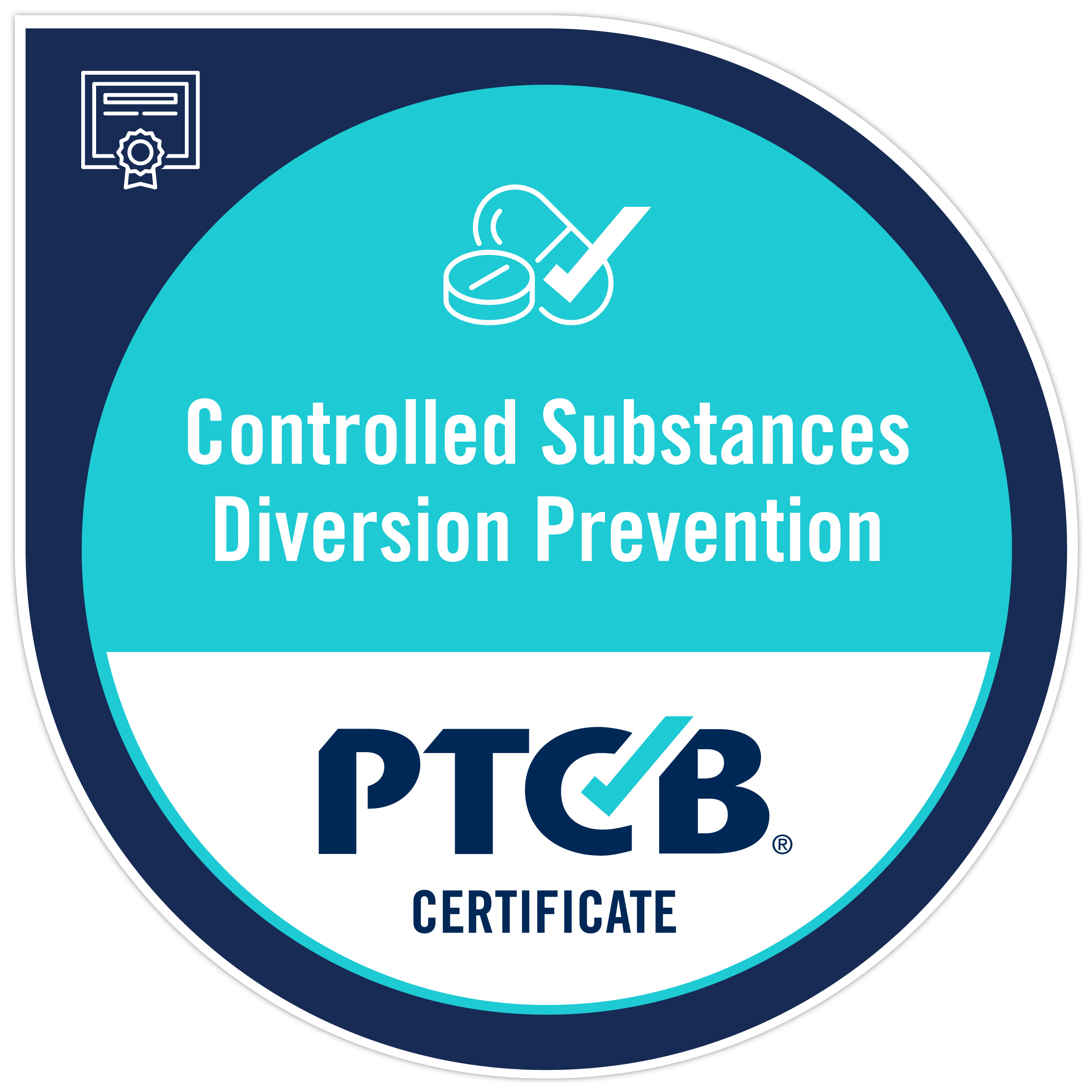| Controlled Substance Diversion (9%) |
| Consequences of diversion (e.g., infection risks to patients, organizational liability, fines/indictments, fraud charges, loss of job and/or license) |
| Signs of impaired health-care workers (e.g., mood changes, agitation, dilated pupils, sudden declines in job performance) |
| Motivations to divert CS (e.g., addiction, financial gain, recreation) |
| Controlled Substance Diversion Prevention Program (30%) |
| Areas of vulnerability in procurement, preparation and dispensing, prescribing, administration, and waste/removal processes |
| Elements of a comprehensive and effective controlled substances diversion prevention program (CSDPP) |
| Types and functions of security control measures, devices, and software to detect and prevent diversion (e.g., locking storage, cameras, ADCs, analytics software) |
| High risk areas of the pharmacy (e.g., anesthesia area, CS vault, IV room, will call, receiving) |
| Chain of custody methods (e.g., regulation of access control, presence of witnesses for signing delivery sheets, use of tamper-evident containers) |
| DEA Requirements (38%) |
| DEA registration requirements (e.g. power of attorney, renewal) |
| Procedures to validate DEA numbers (e.g., formula and component parts of the DEA number) |
| Contents, appropriate usage, and record keeping for DEA form 222 |
| DEA Controlled Substance Ordering System (CSOS) |
| Contents, appropriate usage, and record keeping for DEA form 41 |
| Contents, appropriate usage, and record keeping for DEA form 106 |
| Knowledge of DEA scheduled medications and which are at high risk for diversion |
| DEA requirements for conducting physical inventories and record keeping |
| Contents, appropriate usage, and record keeping for DEA form 107 |
| Actions to take during a robbery or theft event |
| Procedures for sales of CS and restricted OTCs (e.g., pseudoephedrine) |
| Surveillance and investigation (23%) |
| Suspicious data patterns (e.g., waste buddy, night shift sedation, cancel removes, pocket inventory, anomalous usage) |
| Surveillance practices and techniques (e.g., reconciliation of invoices to purchase history reports, check list to verify all paperwork is complete, records audits) |
| Signs of product tampering and/or alteration (e.g., vials tops that don’t twist easily, chipped tablets, drug assay sampling) |
| Signs of and methods to detect fraudulent prescriptions |
